What Is Marketing Analytics?
Marketing analytics is the practice oftracking, managing, and evaluating datato measure the success of marketing activities. And gain insights to enhance your marketing efforts.
This helps businesses make better decisions. Because they’re informed by data rather than assumptions.
For example, let’s say a company is evaluating their email performance and notices that they have low open rates but high click rates.
With this information, they might hypothesize that experimenting with more action-oriented subject lines could improve their open rates to drive even more clicks and conversions.
The Importance of Marketing Analytics
Leveraging marketing analytics gives you a concrete way to see which of your marketing activities are effective and which need some improvement. And whether you’re meeting your goals.
Here are some of the specific advantages of using marketing analytics:
- Gain an understanding of how your campaigns are performing, like how your search engine optimization (SEO) efforts are affecting rankings
- Get to know your target audience better
- Identify ways to improve the user experience
- Create hypotheses and forecast future performance
- Optimize campaigns to reduce expenses and maximize returns
But the exact benefits you’ll enjoy depend on the type of analytics you leverage.
Let’s get into that now.
The 4 Types of Marketing Analytics
Digital marketing analytics encompasses four different types of analytics that can be used to answer different questions.
Let’s jump right in and look at each type.
1. Descriptive Marketing Analytics
Descriptive marketing analytics involves collecting and evaluating metrics that describe past events. Like sales, webpage views, ad clicks, shopping cart abandonment rate, etc.
For example, descriptive marketing analytics can help you spot how your rankings in search engines have changed over time (shown below in Position Tracking).
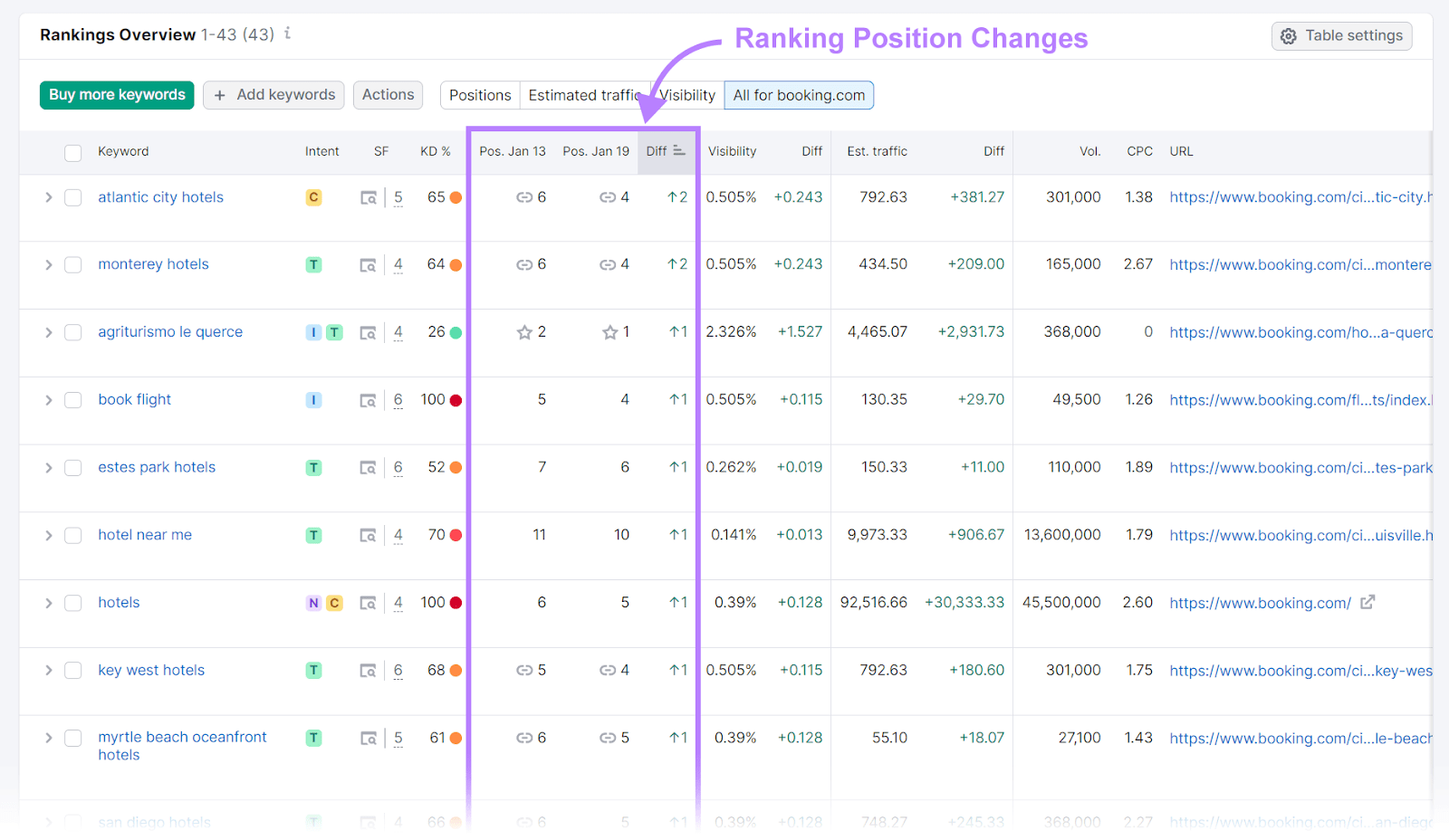
Descriptive analytics are the most commonly used type of marketing analytics. This is mainly because the data needed for this type of analytics is easiest to collect and evaluate.
2. Diagnostic Marketing Analytics
As opposed to simply describing past events, trends, and patterns, diagnostic marketing analytics is used to look at the reasons for them as well.
For example, diagnostic marketing analytics will help you determine that the traffic decrease your site saw (shown below in Google Analytics 4) in December 2023 compared to November 2023 was due to a paid search campaign ending.
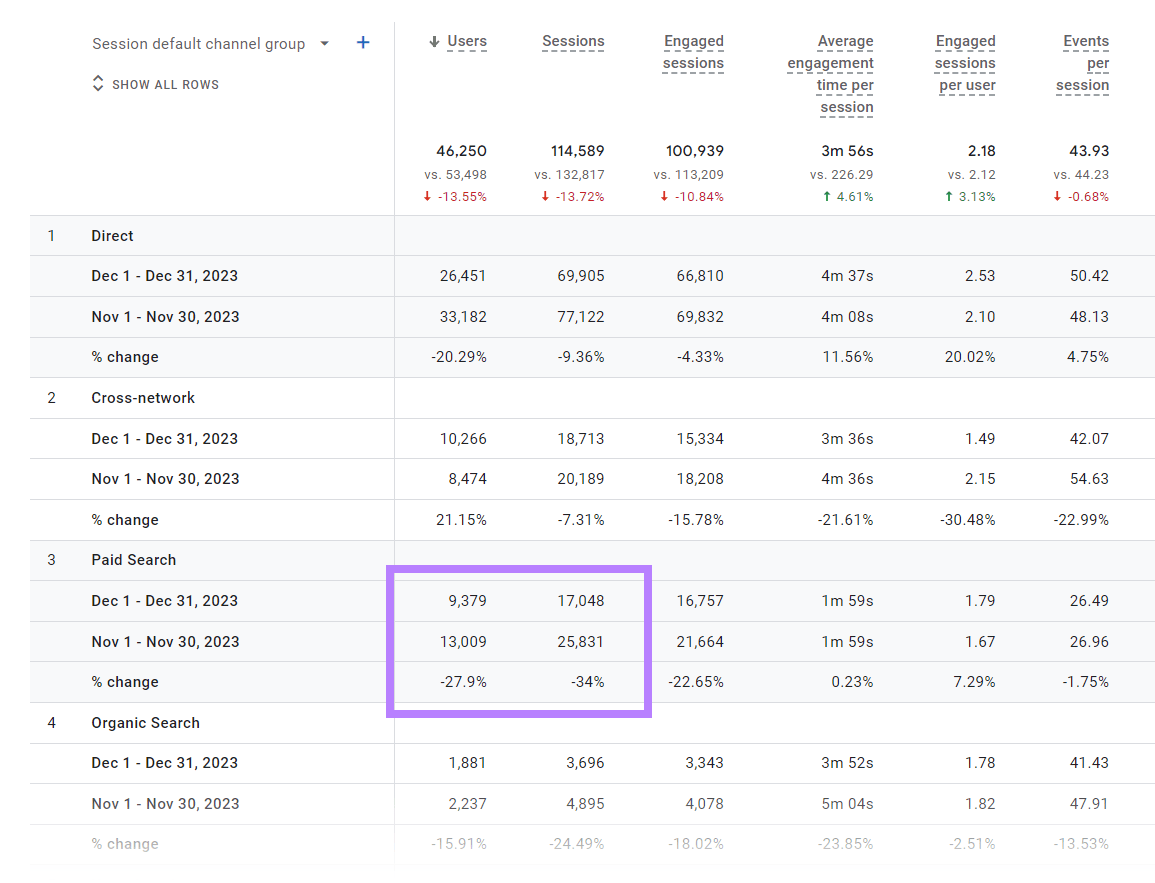
3. Predictive Marketing Analytics
Predictive marketing analytics is used to find out what’s likely to happen in the future.
That can involve using forecasting ****** based on historical data.
For example, predictive marketing analytics might tell you to expect an increase in organic traffic to your blog in July based on a number of years that show this type of trend in Google Analytics 4:
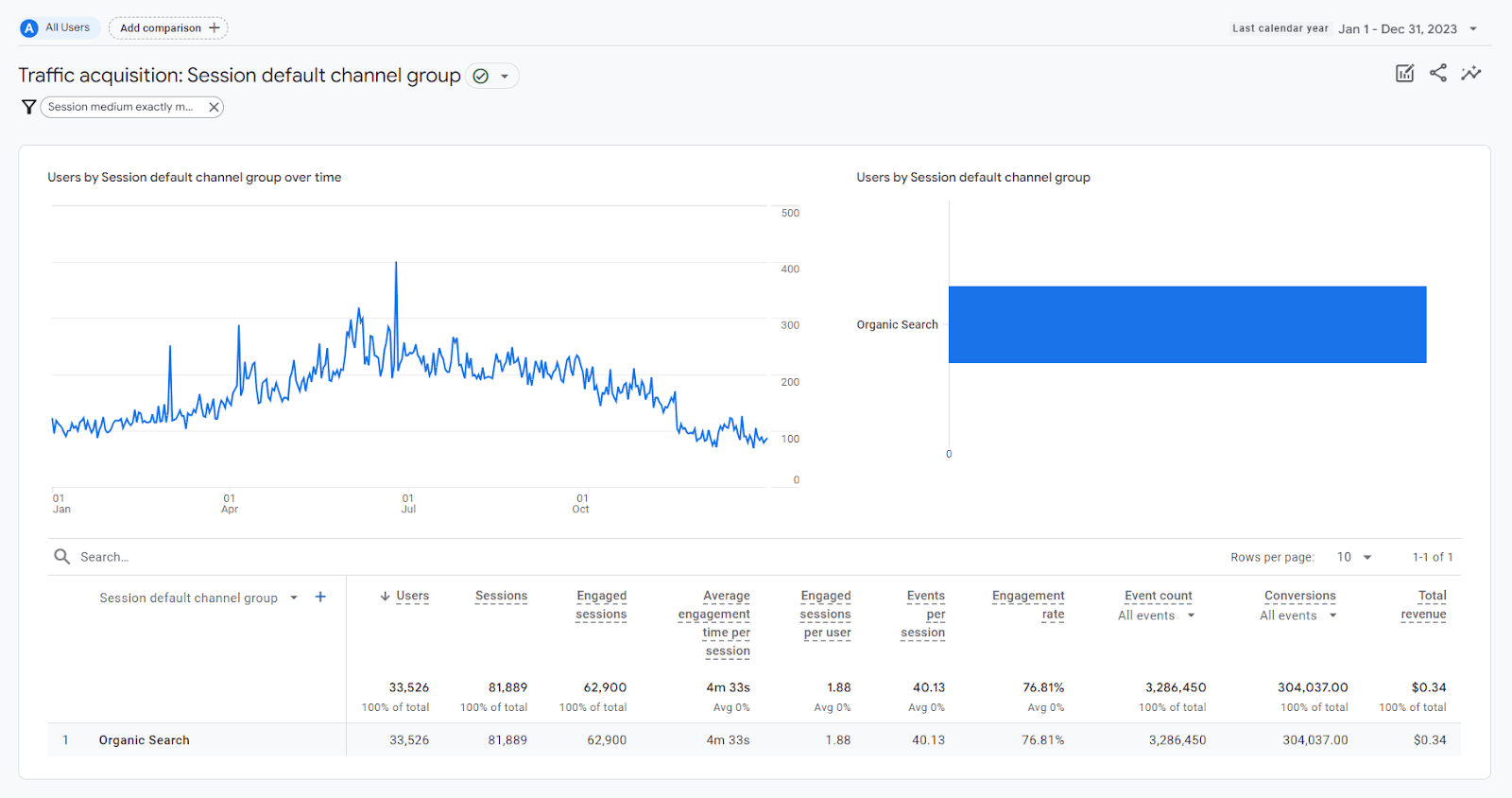
4. Prescriptive Marketing Analytics
Prescriptive marketing analytics is a form of analytics that combines descriptive, diagnostic, and predictive analytics to determine what should be done to ensure something happens in the future.
It enables you to see a number of possible outcomes for a given situation. And what it takes to achieve the best possible outcome. Usually, this happens through the help of machine learning and AI.
For example, let’s say you’re working with automated email campaigns and want to use them to promote a limited offer intended to boost product sales.
Using prescriptive marketing analytics (which takes sophisticated technology) can help you find out which segments are most receptive to time-limited offers, what type of messaging resonates with them, etc. And enables you to craft your campaign in a way that’s most likely to reach your sales goals.
How to Implement Marketing Analytics to Improve Your Business
Implementing marketing analytics is easier when you break it down into smaller steps. Here’s what these steps should look like:
Set Clear Goals
Make sure to set clear goals on what you want to achieve with marketing analytics. Because it helps guide your focus and establish an actionable roadmap.
You can use the SMART framework to make sure you set clear goals. SMART goals are:
- Specific
- Measurable
- Attainable
- Relevant
- Time-bound
For example, “raising brand awareness” isn’t a clear enough goal—it doesn’t meet the above criteria.
A clearer, more actionable goal would be, “gain 20% more YouTube subscribers by the end of the year.”
And always make sure to consider your company’s larger business goals. Because your own goals should naturally support them.
Determine the Most Relevant KPIs
Once you’ve set clear goals, determine the most relevant key performance indicators (KPIs) to measure your progress.
Choosing the right KPIs mostly depends on your goals. As well as your team and your business model.
In most cases, it’s better to opt for monitoring the most relevant KPIs. Otherwise, you might lose focus and become overwhelmed by too much data.
That said, here are some of the most common marketing KPIs:
- Return on marketing investment (ROMI): a percentage that shows you how much revenue you gained frommarketing efforts compared to the amount you spent
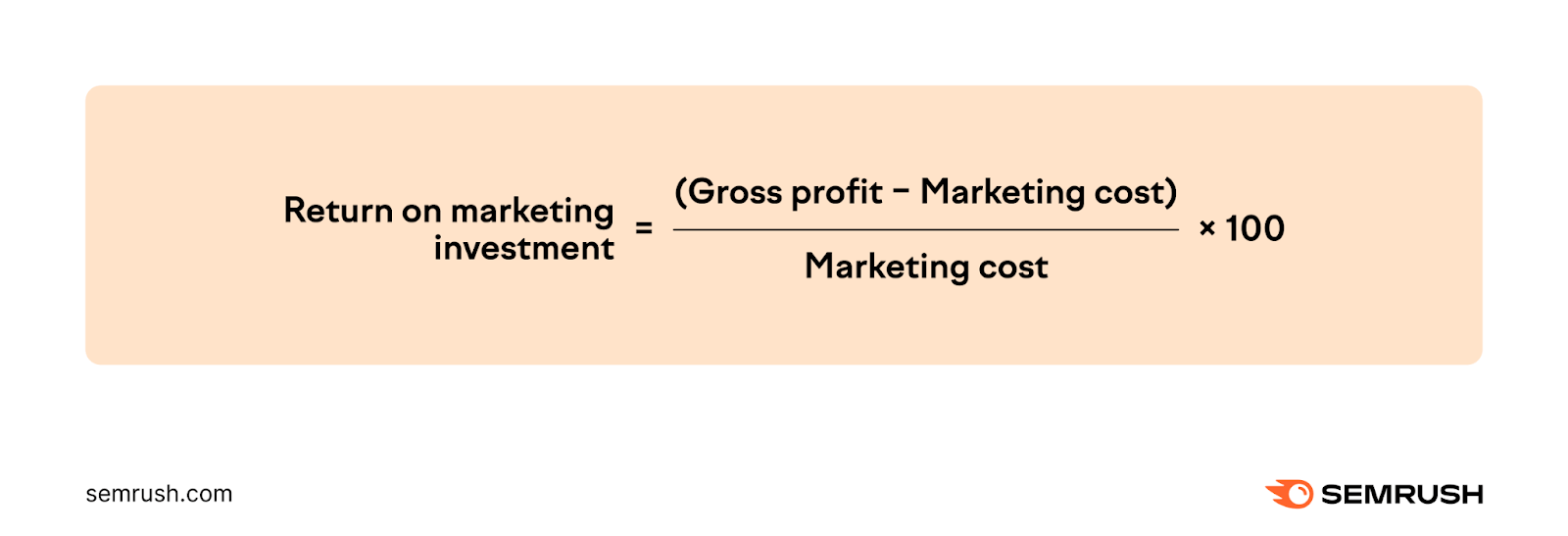
- Customer lifetime value (CLTV): the monetary value you can expect to gain from a customer over the entire period of time they remain your customer
- Customer acquisition cost (CAC): how much it costs to turn a potential customer (lead) into a custome
- Conversion rate: The portion of users who take a desired action (conversion). Like making a purchase
- Search engine rankings: your webpages’ positions on search engine results pages (SERPs) for the queries they’re targeting
- Backlinks: The number of links pointing to your website from another website. These can improve your SEO performance—and you can track the ones you have using Backlink Audit.
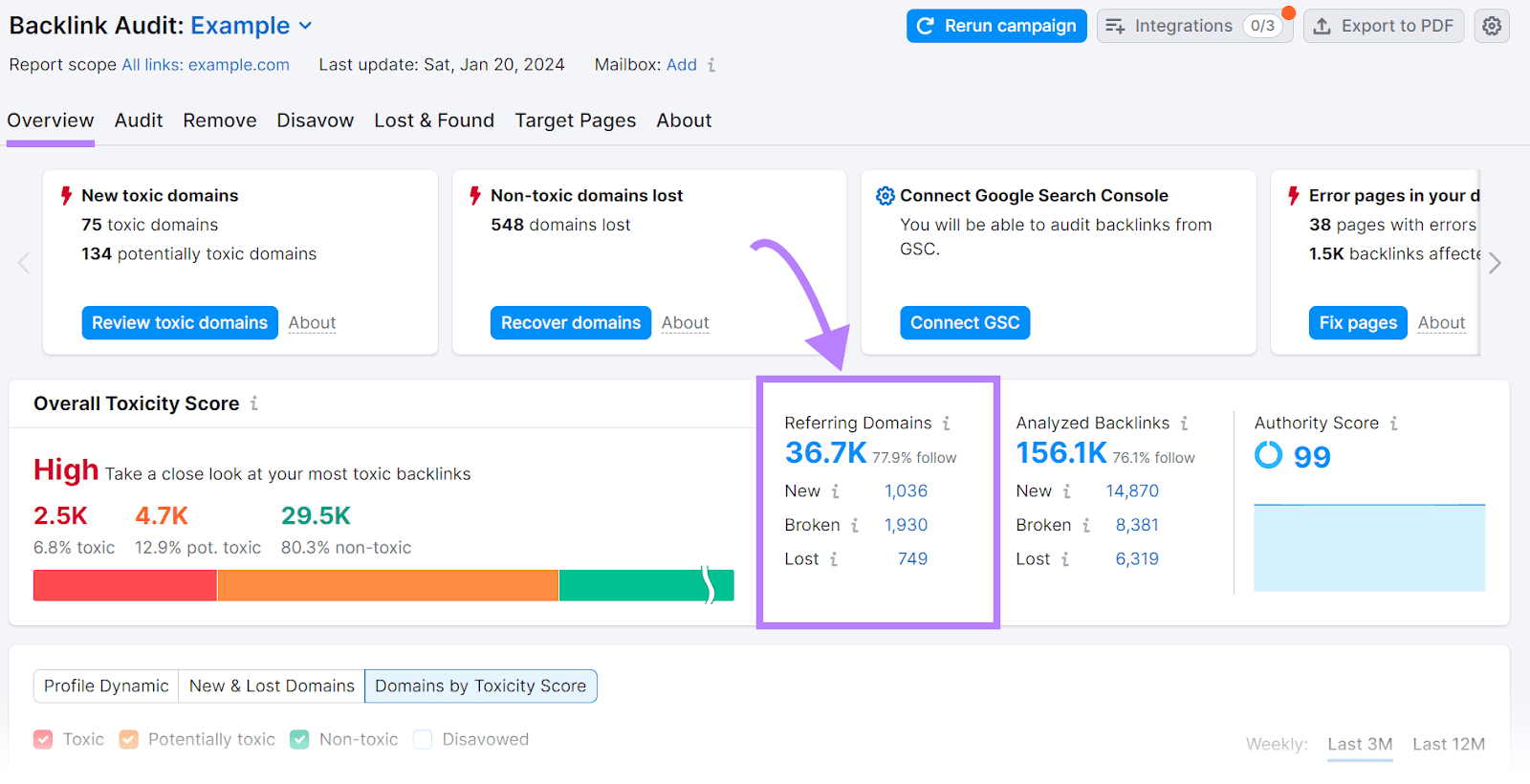
- Email open rate: the percentage of recipients that opened an email compared to the total number of emails that were delivered
- Email click-through rate (CTR): the ratio of email recipients who click on a link in your email compared to the number of total number of recipients who open it
- Follower count: the number of followers you have on one of your social media channels

Select the Appropriate Marketing Analytics Tools
Selecting the right tools enables you to effectively track your chosen KPIs. To see what adjustments might be needed and whether you’re on track to meet your goals.
For example, let’s say one of your primary goals is to increase organic traffic by 20% over the next year. And that you’ve decided to support that by gaining more relevant backlinks.
You can find relevant sites in your niche to reach out to using the Link Building Tool. Here’s how it works:
Open the tool and click the “+ Create project” button.
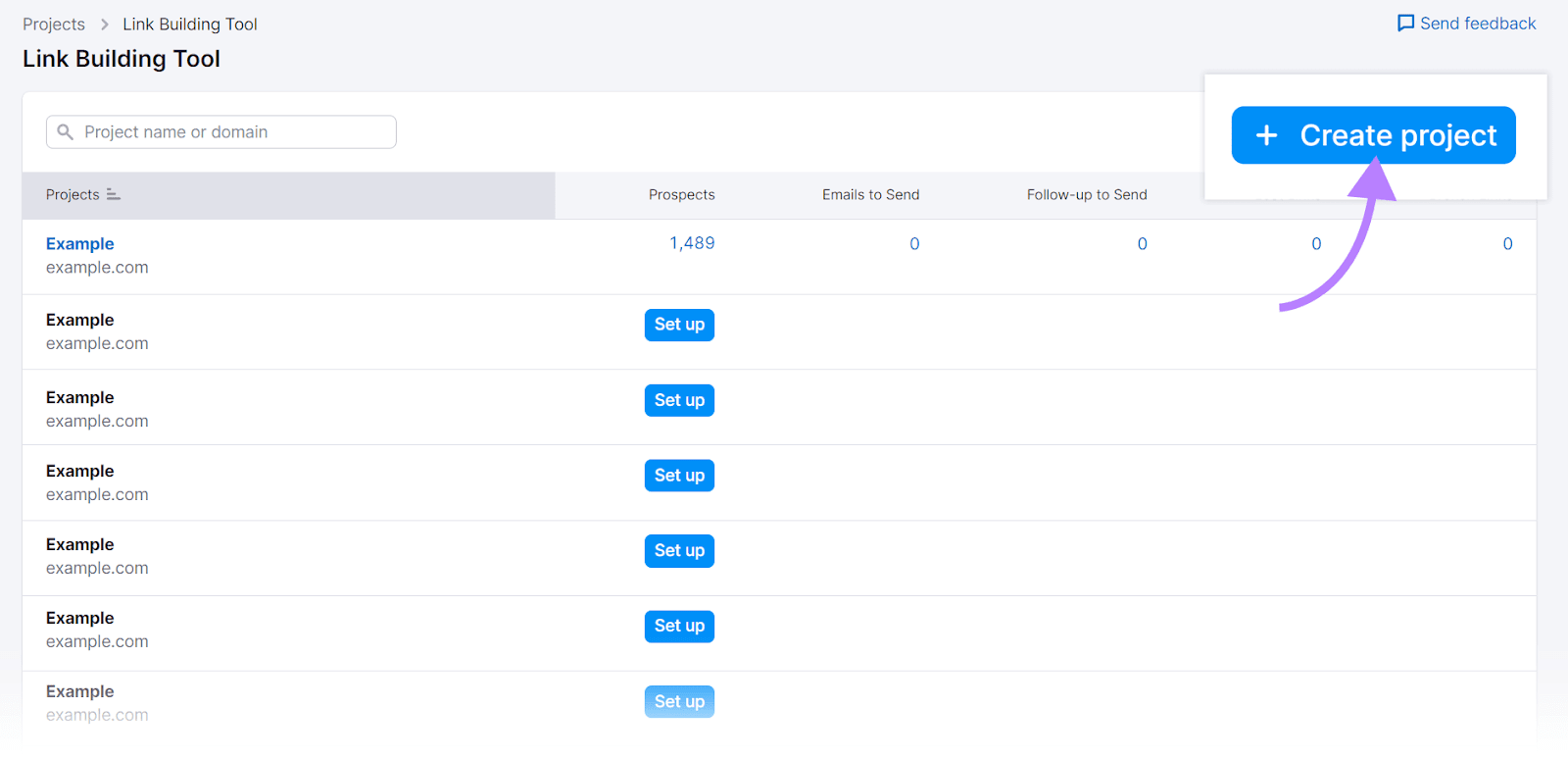
Enter your domain and click “Create project.”
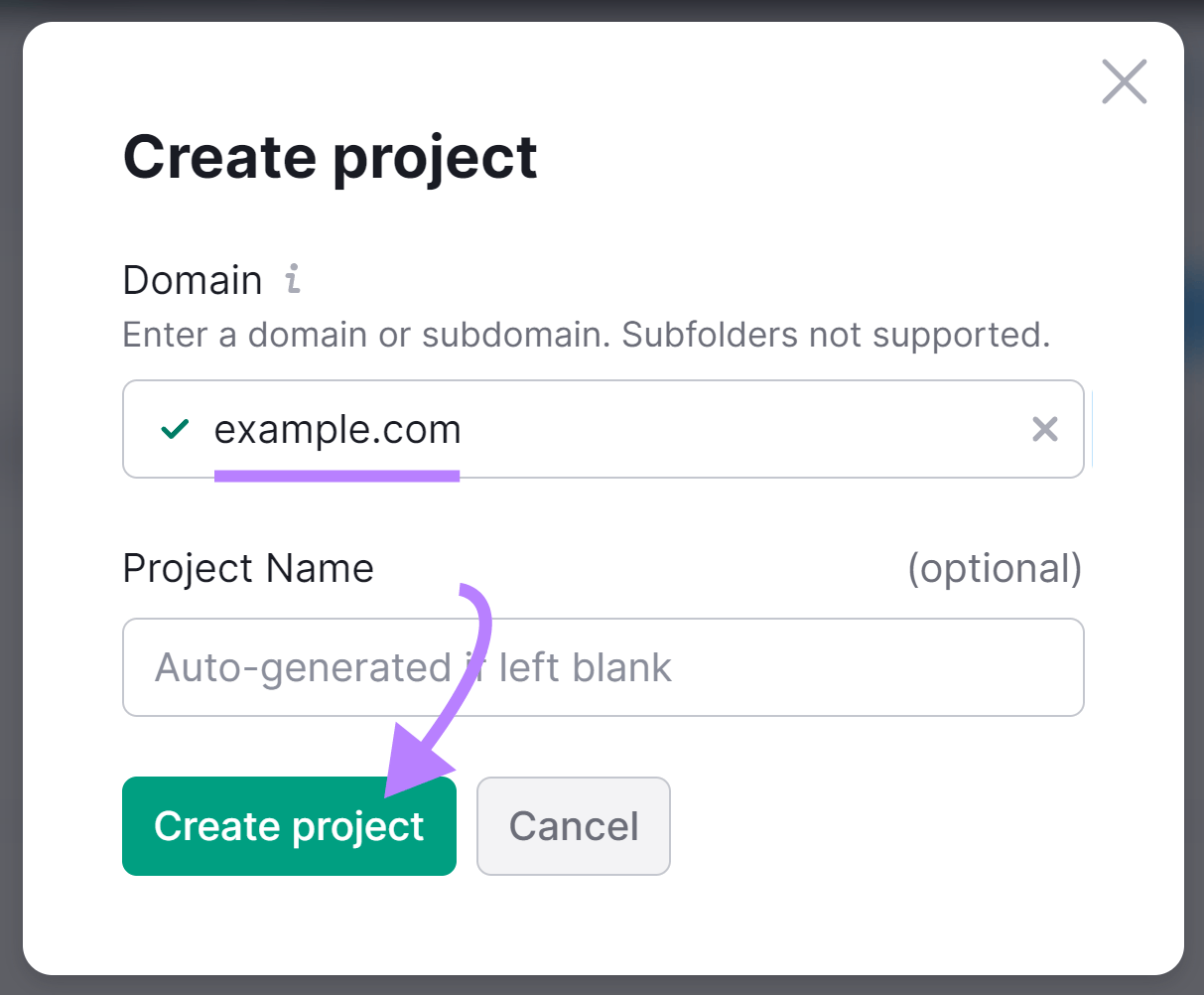
Then, follow the Link Building Tool configuration guide to get your project set up.
Once the tool is ready, head to the “Prospects” tab to see a list of recommended sites you can reach out to for backlinks.
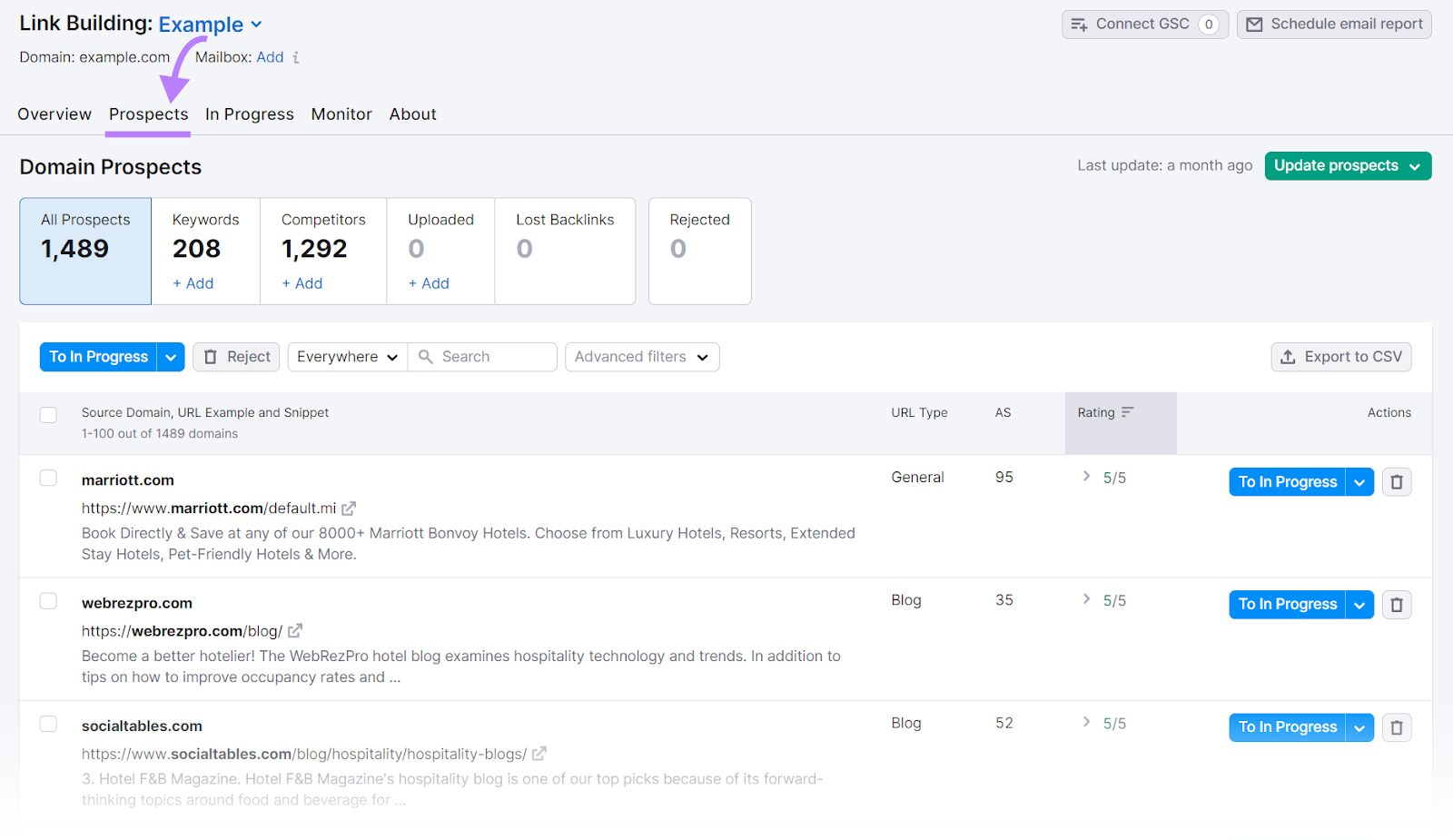
When you find one you want to contact, click the “To In Progress” button next to it.
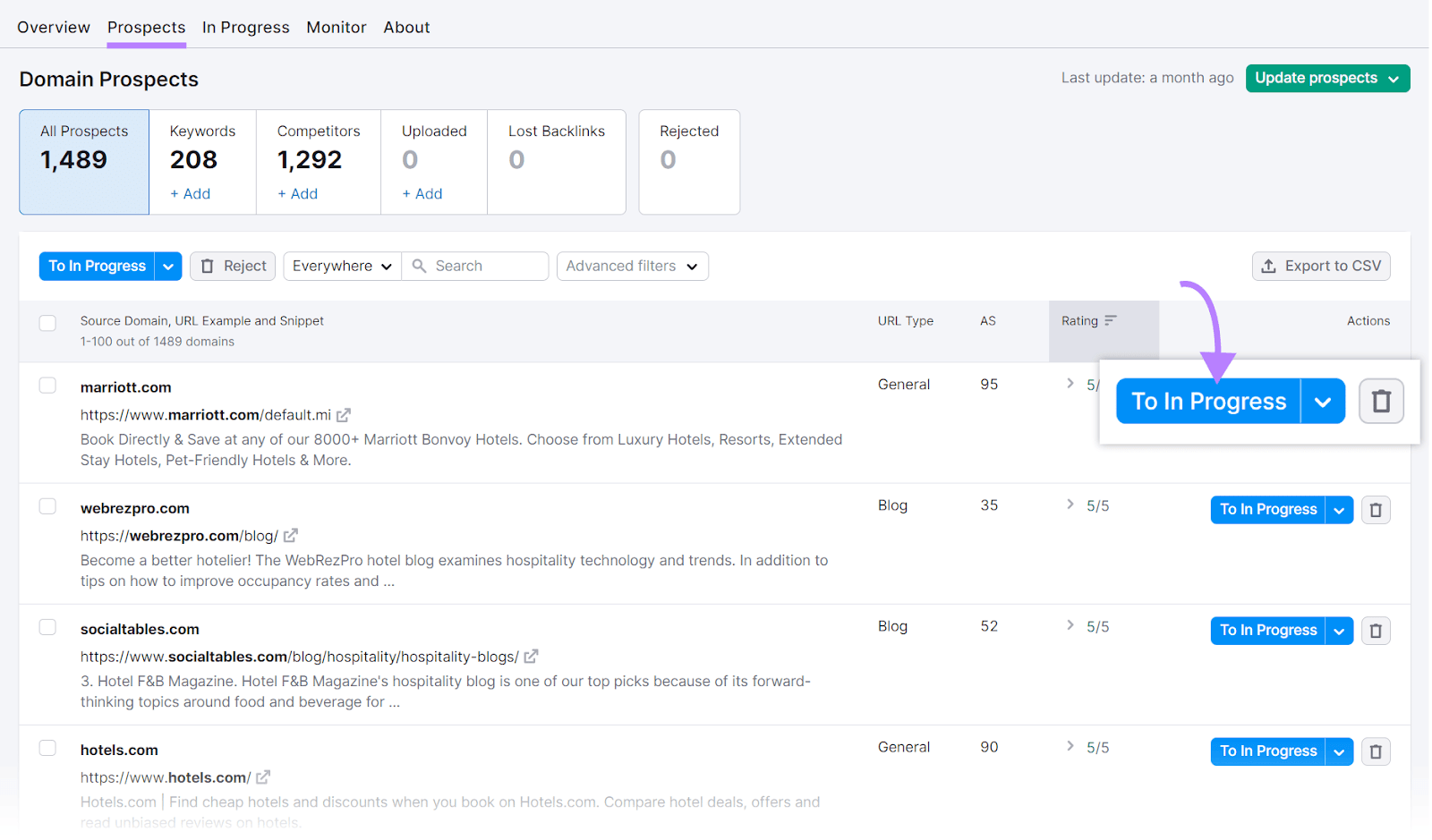
Once you’ve created a list of prospects, head to the “In Progress” tab. And click the “Contact” button next to a prospect.
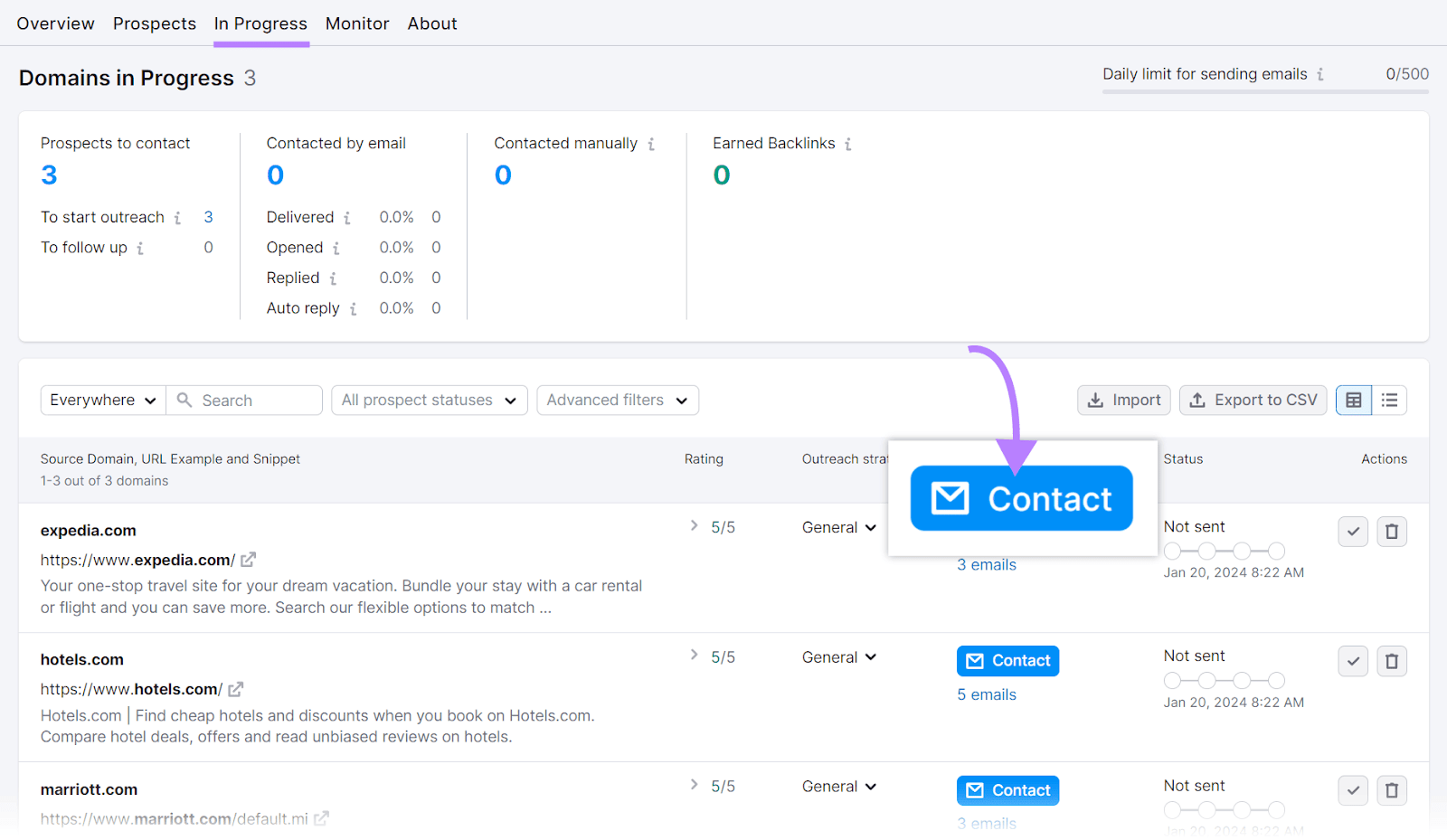
From here, you can craft your personalized outreach emails. And monitor your campaign’s progress.
Or maybe you want to increase engagement on Facebook by 10% in the next quarter.
You can get ideas on how to meet your goal by using Social Analytics to see what does and doesn’t work for you.
Open the tool, follow the Social Analytics configuration instructions to set up your project, and then head to the “Facebook” tab.
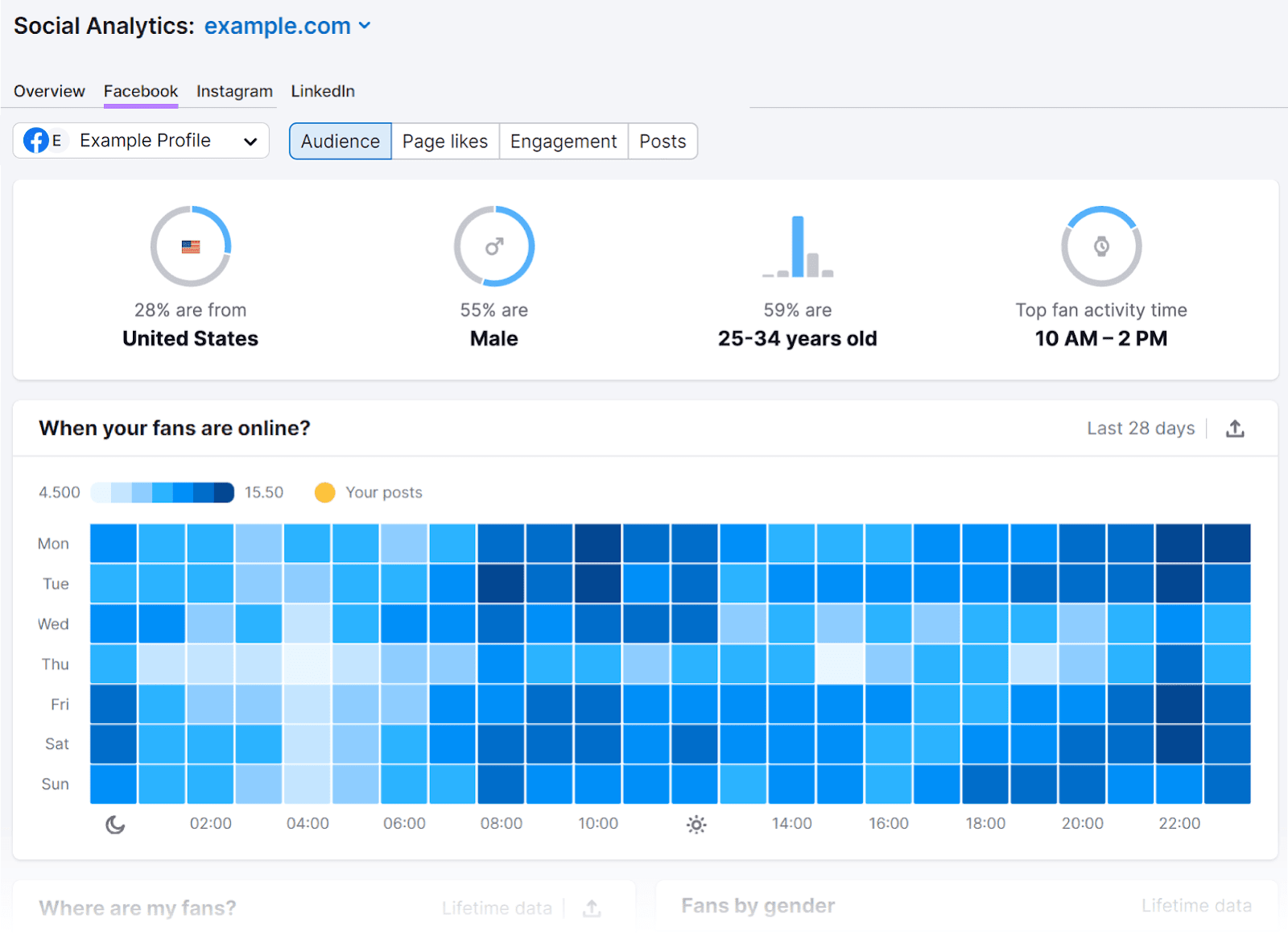
Select the “Engagement” tab to evaluate your overall engagement metrics on the platform. Like comments, shares, and engagement rate.
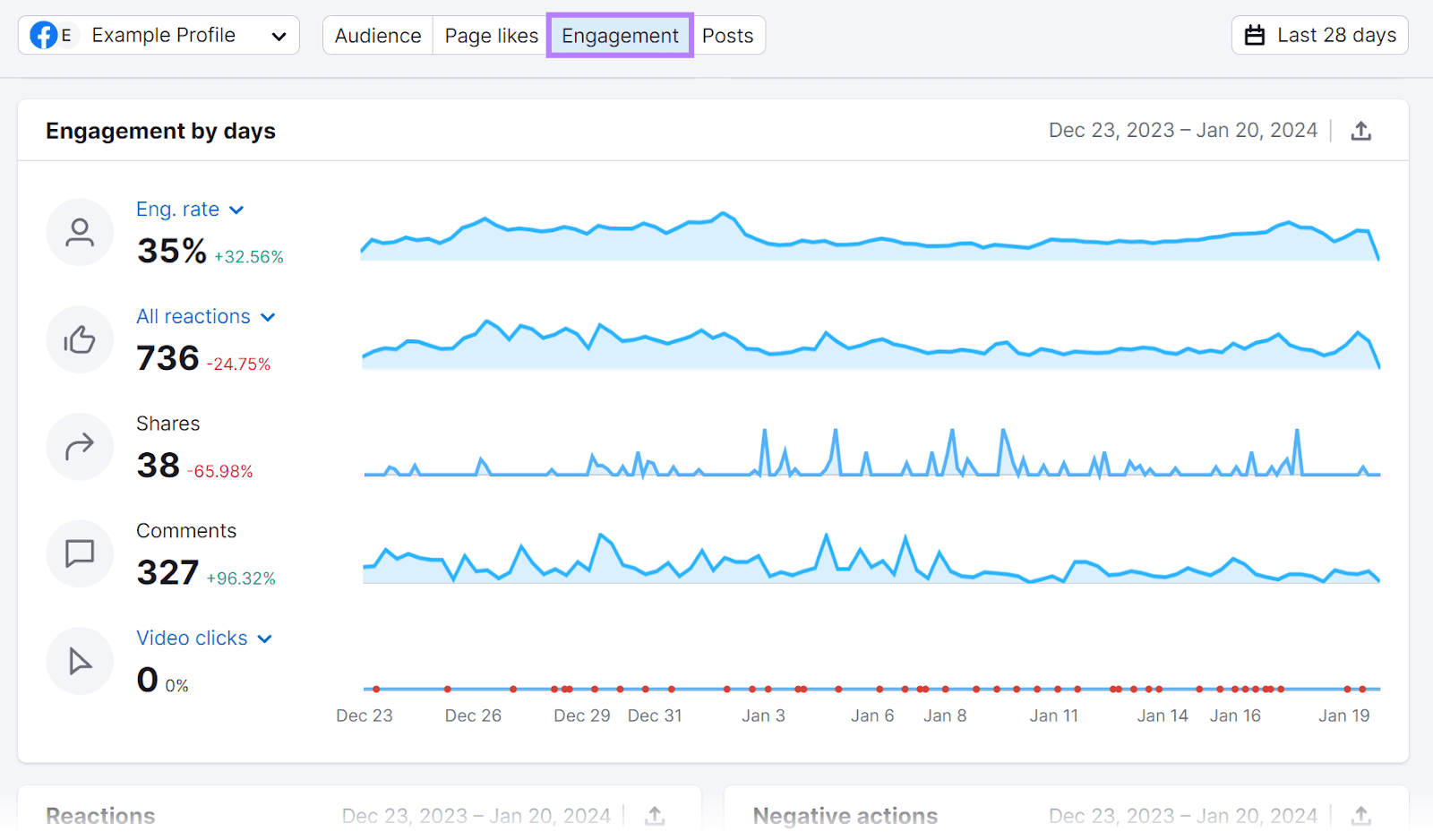
Next, go to the “Posts” tab. And look through to find the posts with the highest engagement rates.
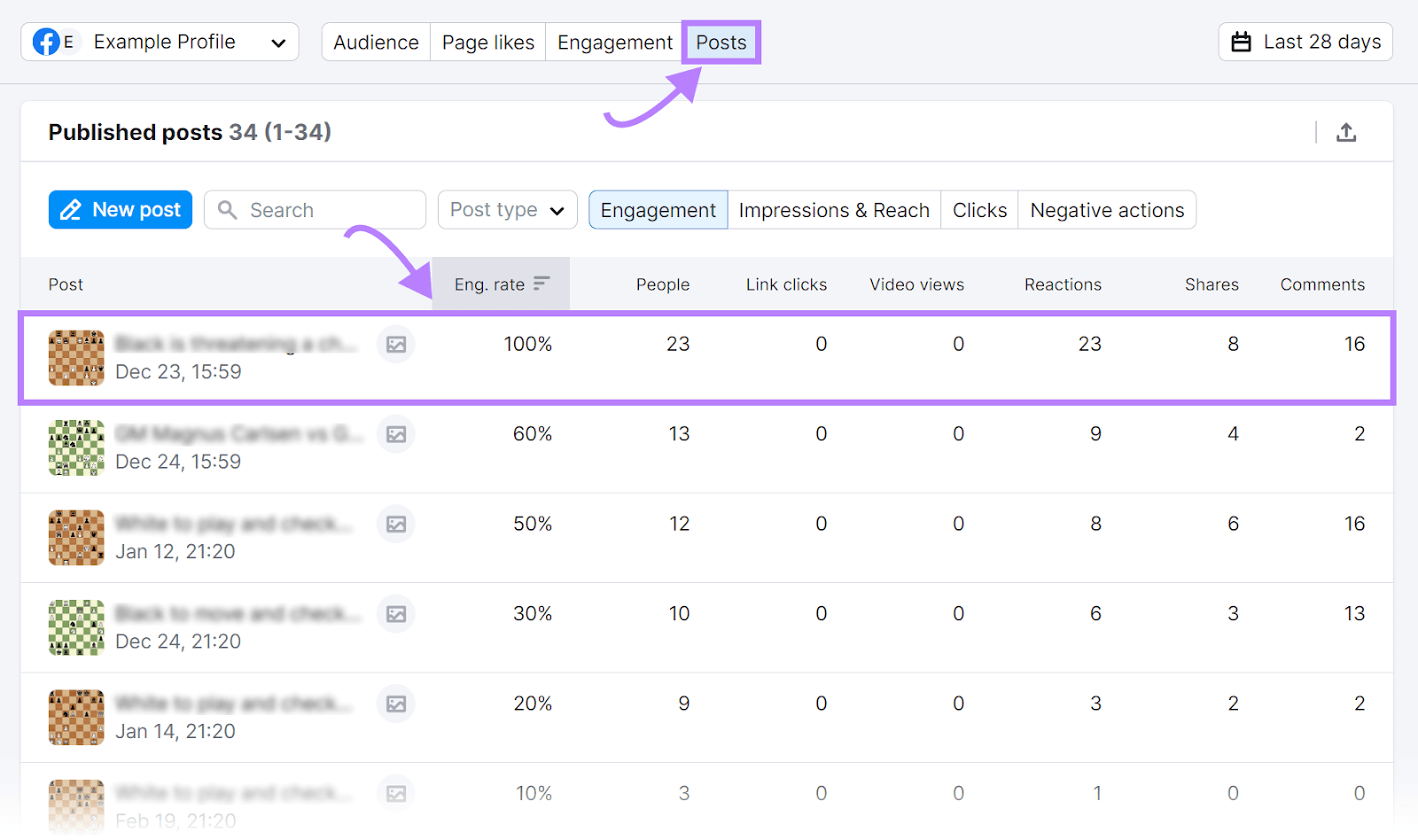
Now, it’s time to analyze what you see.
Which words and images are being used? Which offers and deals are featured? Which content formats are you noticing?
Use this information to find out how to shape your social media strategy to increase your Facebook engagement.
There are quite a few other valuable marketing tools you can choose from as well. For example:
Collect and Analyze Data
You’ll need to collect and analyze a fair amount of data to gain meaningful insights you can share with others and then act on.
How do you do that?
It depends.
Let’s say you’re focused on improving a handful of specific metrics related to SEO, social media, and paid search. And that you’re using Position Tracking, Google Analytics 4, Social Analytics, and Google Ads.
You’ll want to use each of those tools to regularly review performance. We recommend doing this on a monthly basis (if not more frequently).
For example, let’s say you notice a significant drop in your SEO rankings from one month to the next. That should prompt you to consider whether there were any Google algorithm updates, technical changes to your website, etc.
And make note of your findings for future reference.
If you’re using Position Tracking, you can even create notes directly in the tool.
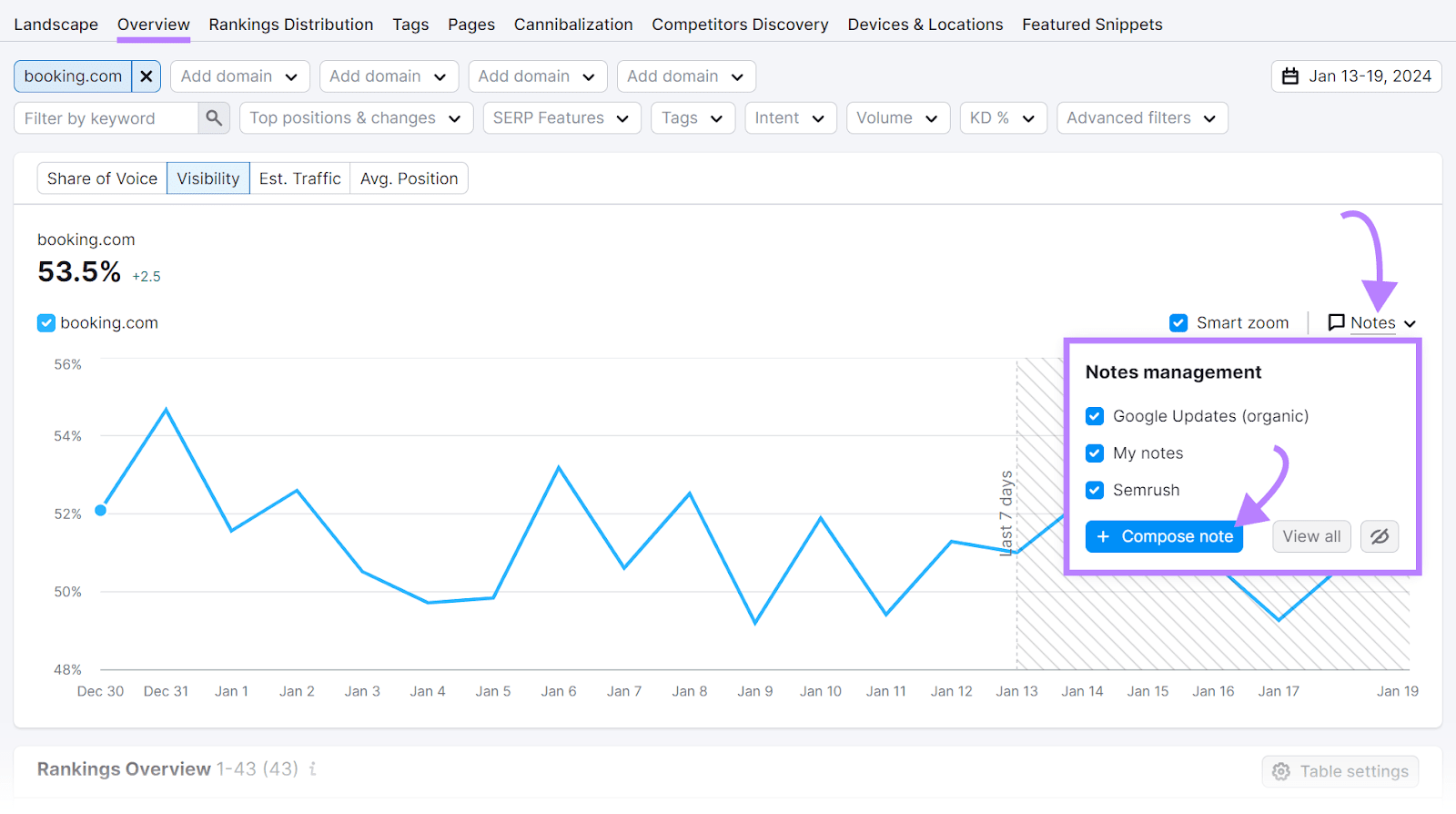
Share Your Results
Next, it’s time to share your results with leadership. To show how your marketing efforts are tracking toward goals. And potentially get buy-in for investing more in certain tactics.
My Reports makes it easy to turn your findings into reports that you can share across your organization.
Just choose from one of the available templates if it meets your needs.
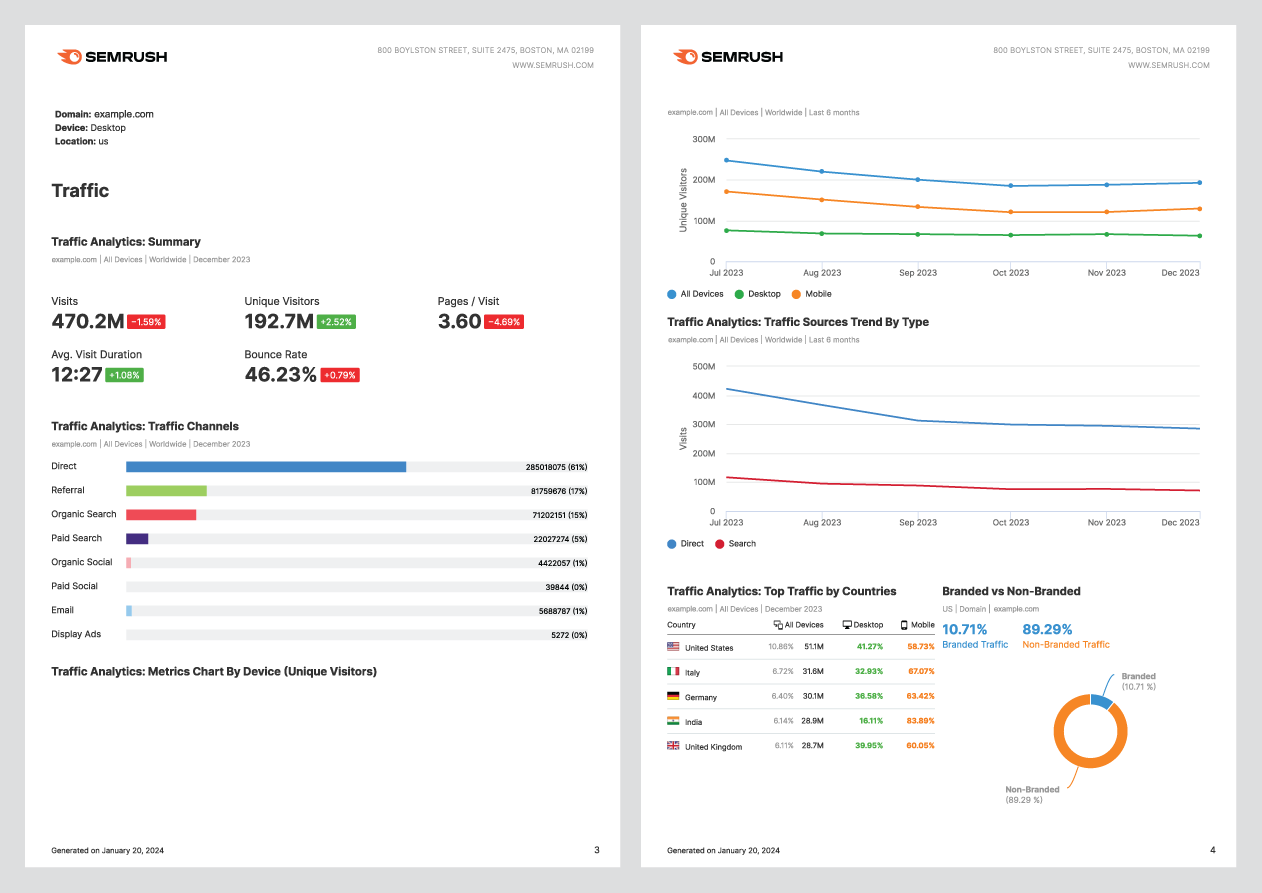
Or create your own from scratch.
Make Data-Driven Decisions
Making decisions for your future marketing activities based on data you’ve collected and analyzed gives you a greater chance of succeeding in the future. Especially compared to decisions that are based on intuition alone.
For example, if your email marketing campaign isn’t yielding the results you were hoping for, your intuition might tell you that the whole campaign needs to be reworked from the ground up.
But having access to the right data could show you that your email campaign has solid open rates but low click-through rates. Based on this data, you could instead decide to work on more attention-grabbing calls to action (CTAs).
Get Started with Digital Marketing Analytics
Done right, marketing analytics enables you to gain a competitive advantage over other organizations.
Clearly, having the right tools is an important part of effectively implementing a solid analytics program. And you can get access to a whole host of options for content marketing, SEO, paid advertising, and more with Semrush.
Try it for free today.
Source link : Semrush.com
